
1. LECHES (Long ECHElle Spectograph)
LECHES First Light on 21.05.2002 with the spectrum of a neon lamp. Colour photo
from a digitial camera
 |
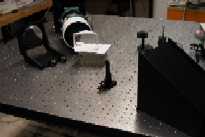 |
|
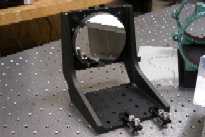 |
|
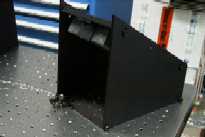 |
|
| Prisma table (in workshop) | |
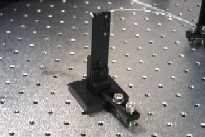 |
|
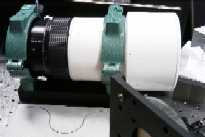 |
|
 |
|
2. FIASCO
And the second generation came with FIASCO (FIbre Amateur
Spectrograph Casually Organized).
We've built three of these spectograph, the first one with a 512x512 front illuminated
CCD camera as detector (in fact, the same camera as in PONCHADO). The second
one with a 512x512 back illuminated CCD camera. These first two cameras were
manufactured by Hale Research (UK) unfortunately out of the market nowdays.
The third FIASCO was built with a 1024x1024 back illuminated CCD camera from
Finger Lakes (USA).
3. Ponchado
The history of our first stellar spectra with a fibre spectrograph started in 1993 with a test bench spectrograph. The configuration used at that time was the "crossed Czerny-Turned" design with spherical mirrors. This configuration was very compact but unfortunately generates high astigmatism. Since our spectra are limited by dark current noise and the spectrum spreads 10 to 14 pixels perpendicular to the dispersion, this configuration was abandoned. After some trials, we finally adopted the classical "textbook" layout but with an objective lens as camera to reduce all aberrations at a maximum. The result is shown in the figure below. Ponchado borned, which means robust or strong in familiar mexican language.
Our detector was a front illuminated CCD from Hale Research (UK)